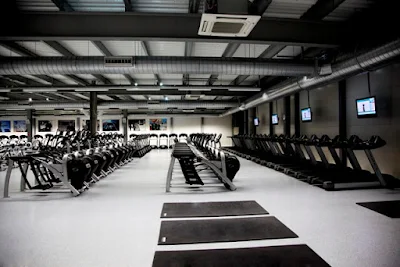by Bill Starr
Stuck in a strength rut? Legendary coach Bill Starr reveals the power of light days! Learn how strategically planned "off" days can fuel faster progress and prevent injuries. Discover light day exercises, sets & reps, and avoid common mistakes.
Why Every Strength Training Program Needs Light Days
Ever feel like you're hitting the gym hard, but the results just aren't coming? You might be surprised to learn that pushing yourself to the limit every workout can actually hinder progress. Bill Starr, a weightlifting legend, championed the concept of light days – a crucial element for maximizing strength gains.
Light Days: More Than Just Rest
Think of your body like a high-performance engine. While heavy lifting is essential for building muscle, without periods of rest and maintenance, it'll sputter out. Light days provide that crucial "cooldown" period, allowing your muscles to:
- Repair and Rebuild: Lighter weights minimize muscle breakdown, promoting faster recovery and a stronger foundation for future gains.
- Perfect Your Form: With less weight to worry about, you can focus on meticulous technique, translating to safer and more efficient lifting.
- Boost Your Workload Capacity: Light days allow you to incorporate more total training volume (sets and reps) across your program without overtraining.
Light Day Training in Action: From Beginner to Beast Mode
Bill Starr recommends tailoring your light day approach based on your experience:
- Beginners: Start with the same key exercises (squats, bench press) on both heavy and light days. Focus on nailing form with moderate weights (5 sets of 5 reps). Consistency is key!
- Intermediate Lifters: Ready to branch out? Introduce more exercises and vary sets/reps. Use light days to target weaknesses or complementary movements (e.g., overhead press after heavy bench press day).
- Advanced Lifters: Consider a "split" light day strategy. Hit two heavy exercises on one day, and the third with lighter weights. Follow this with a dedicated heavy day for that third exercise.
Light Days Done Right: Avoiding Common Pitfalls
Light days are powerful, but even seasoned lifters can stumble. Here's how to avoid common mistakes:
- Rep Rage: Don't fall into the trap of adding more reps on light days just to "feel the burn." Stick to the recommended rep range for optimal results.
- Auxiliary Overload: Light days are for recovery, not adding a laundry list of extra exercises. Keep it focused and prioritize core stability and mobility work.
- Tracking Your Journey: Monitor your total training volume across all days. Light days should contribute to your overall program, not replace heavy training or overtax your system.
Bill Starr's Light Day FAQ:
- How often should I have light days? For beginners, 1-2 light days a week might suffice. As you progress, you can incorporate them more strategically, potentially after every heavy training session.
- Do light days have to be boring? Not at all! Use them to experiment with different exercises, tempos, or even explore bodyweight training variations.
- What if I feel "weak" on light days? Embrace it! It's a sign your body is recovering and rebuilding. Embrace the lighter weights and focus on technique, knowing the heavy lifts will feel even more powerful soon.
Light the Way to Strength Gains: Embrace the Power of Light Days
Light days are a game-changer for strength training. By incorporating Bill Starr's wisdom and these practical tips, you can craft a personalized program that optimizes recovery, refines technique, and propels you to new strength levels. Remember, consistency, proper form, and strategic light days are the keys to unlocking your full potential in the gym!
















0 comments:
Post a Comment